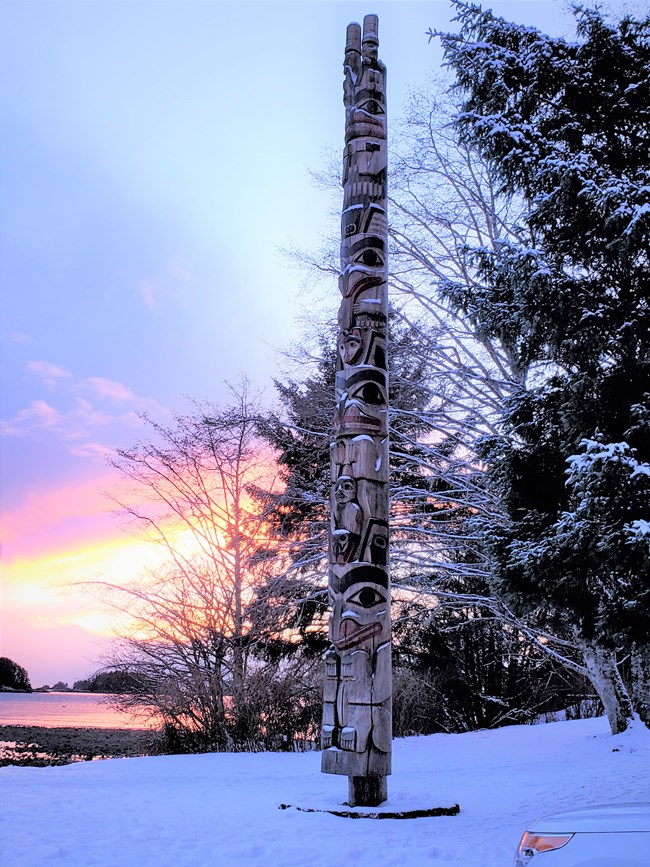
NPS Photo/ Cinnamon Dockham The park's visitor center and trails contain several different types of poles:
They generally convey the ancestry (crest poles) or history (history poles) of a particular clan, folklore or real-life experiences (legend poles), or commemorate a person of importance (memorial/mortuary poles). Poles along the Totem Trail |
Last updated: December 17, 2021
